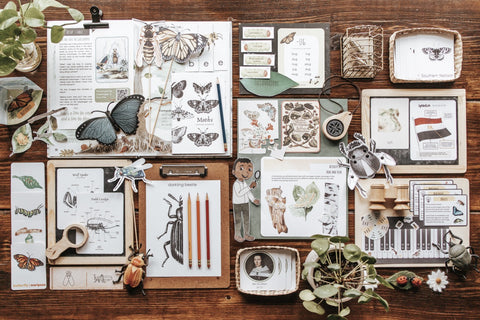
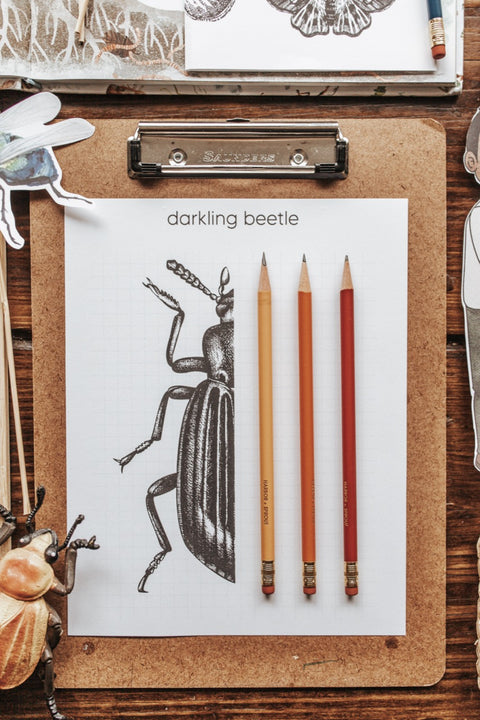
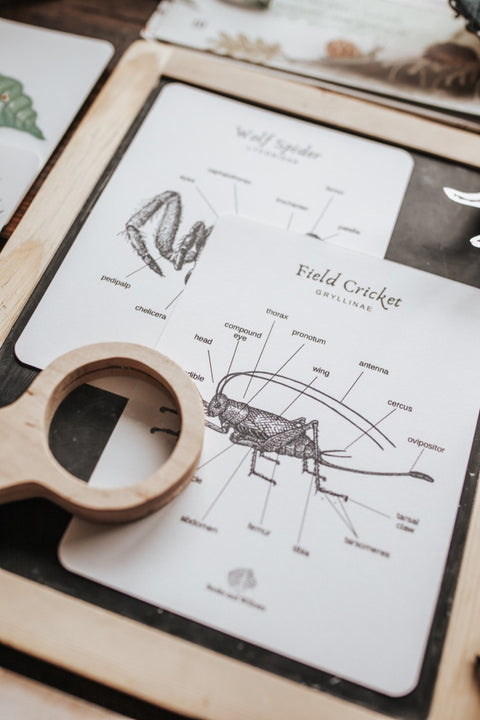
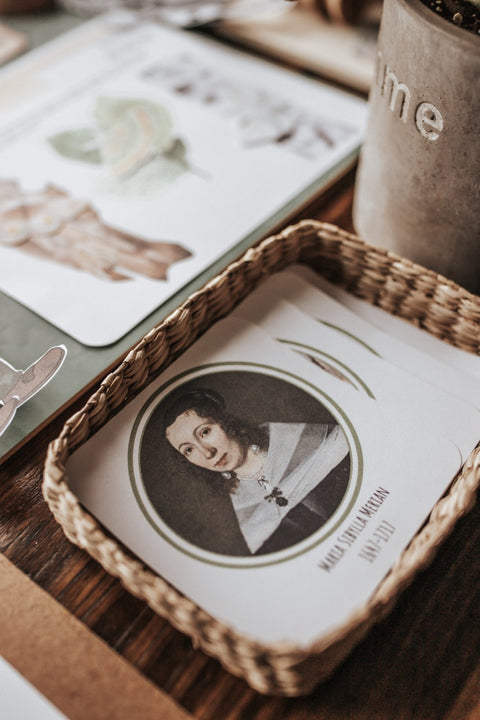
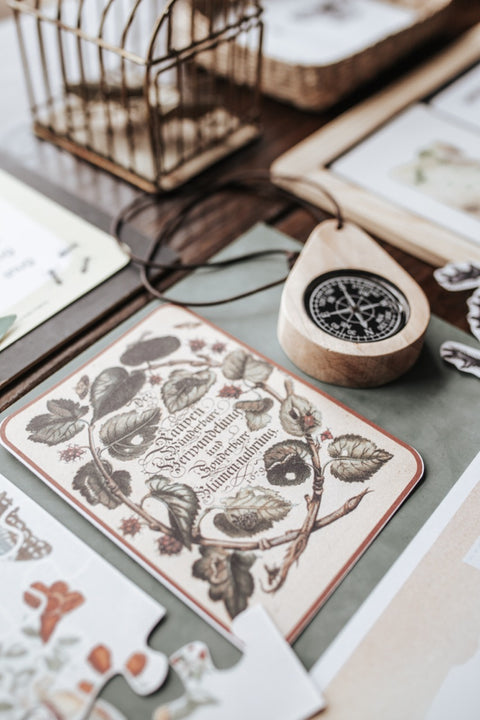
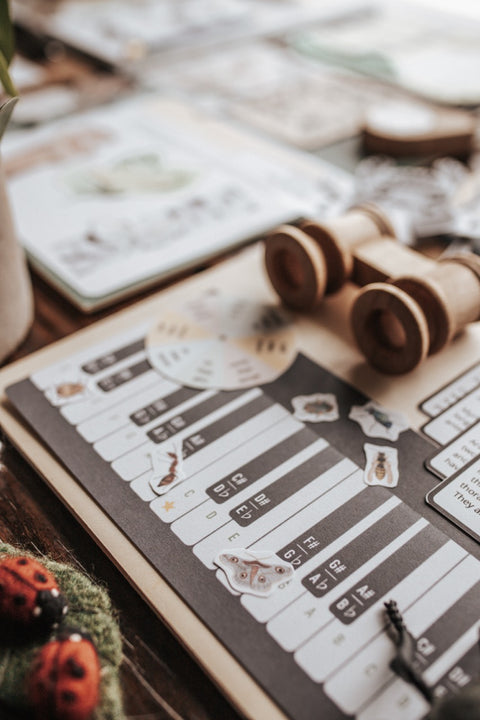
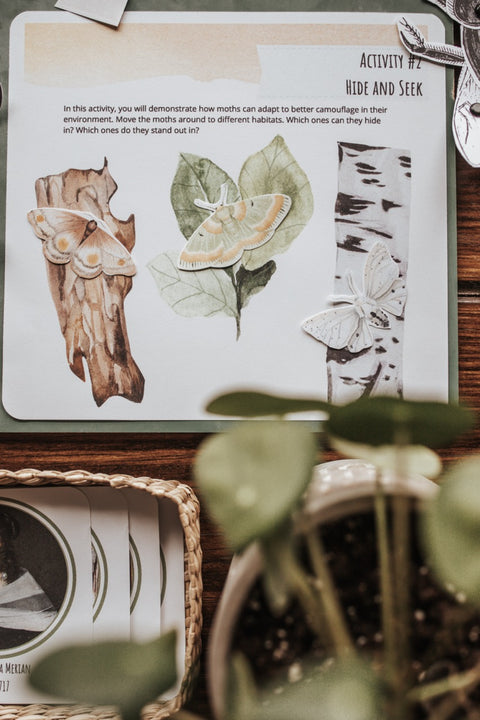
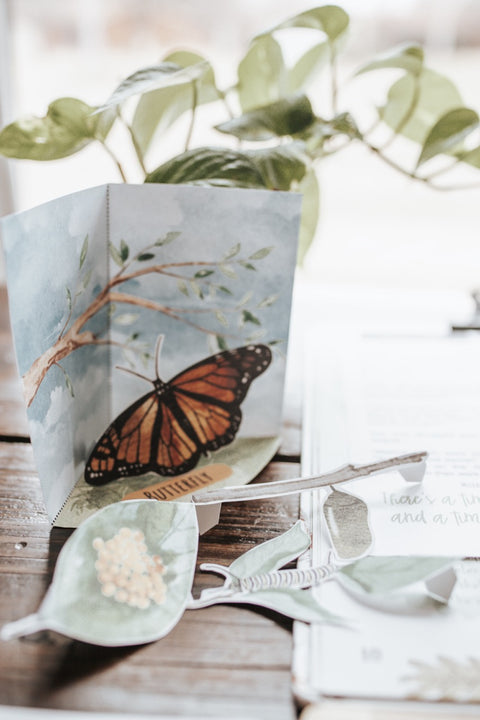
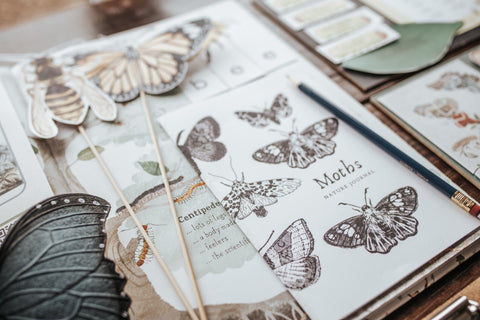
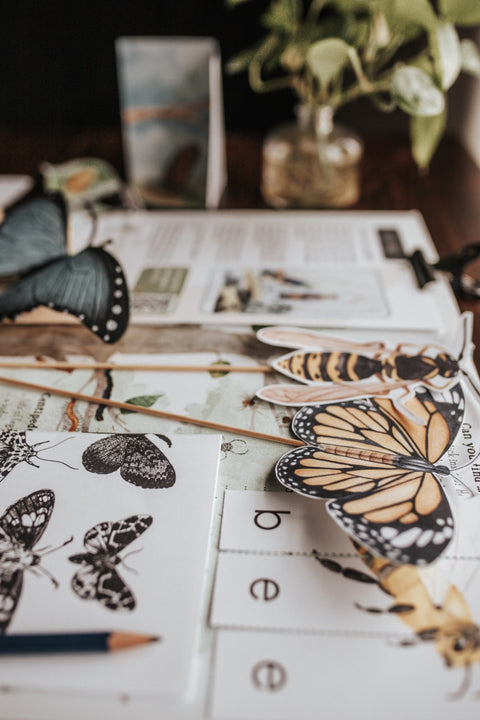
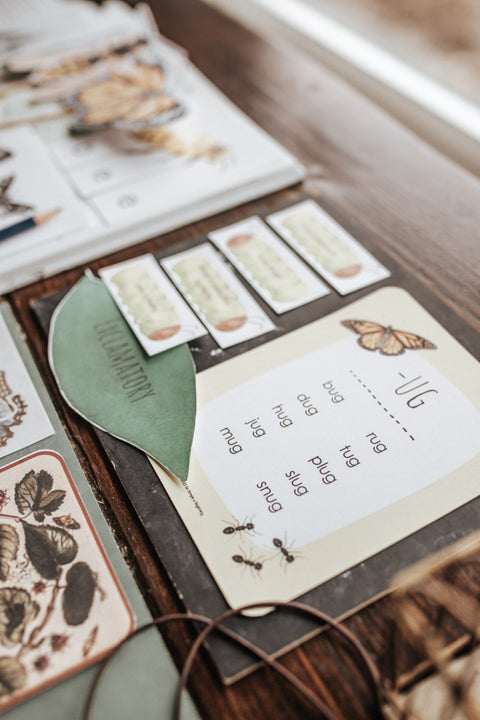
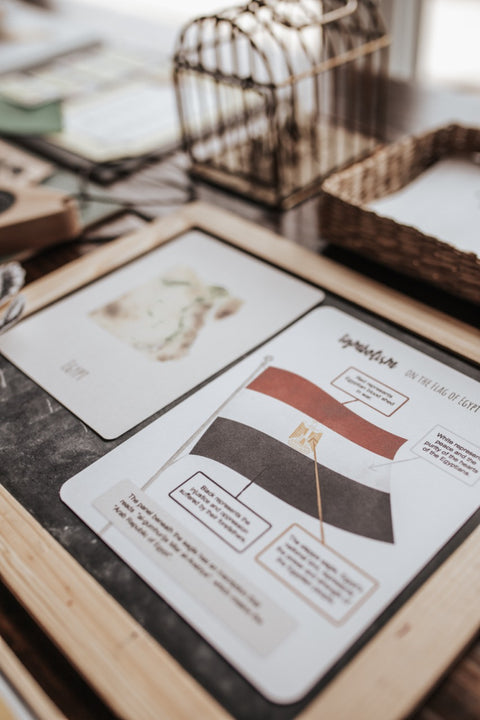
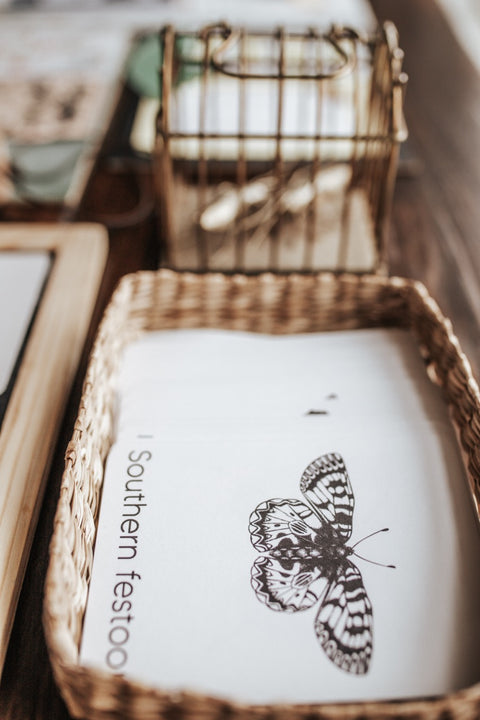
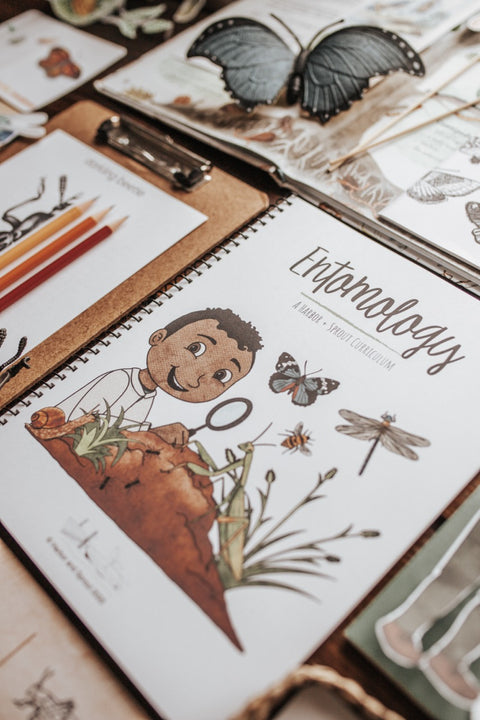
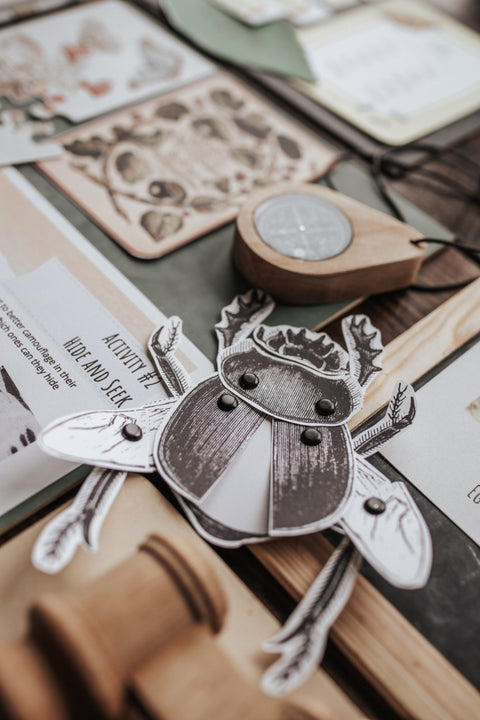
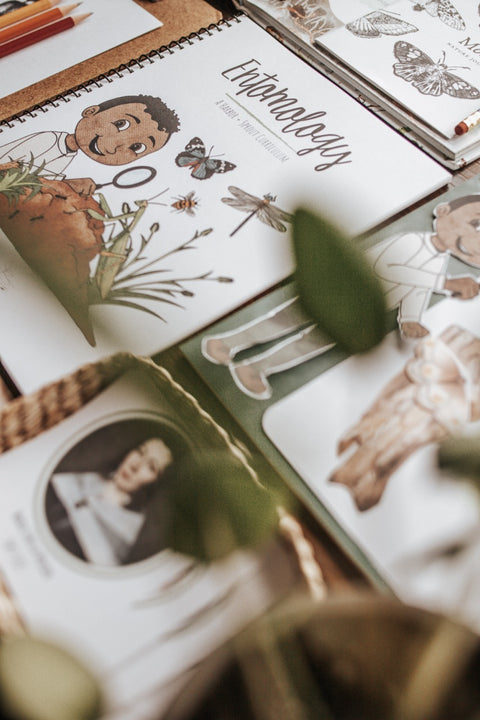
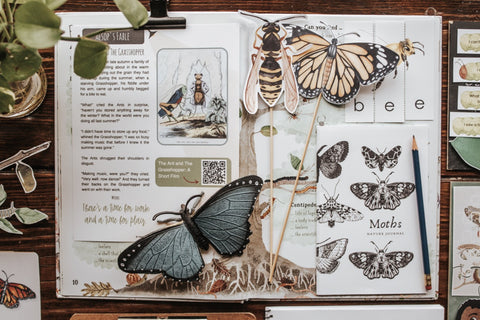
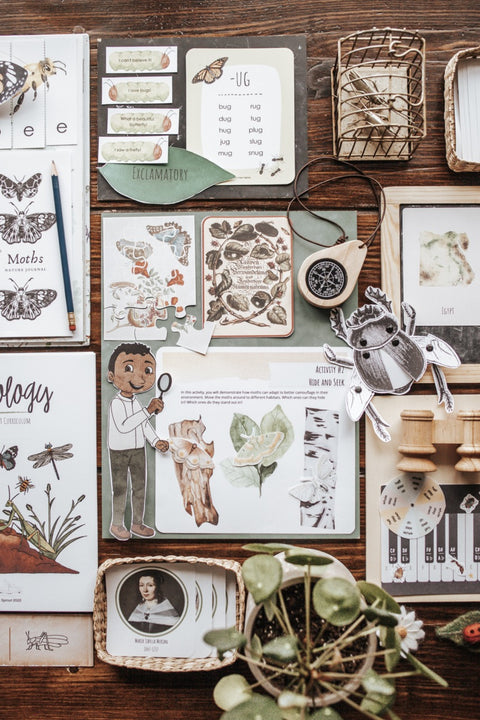
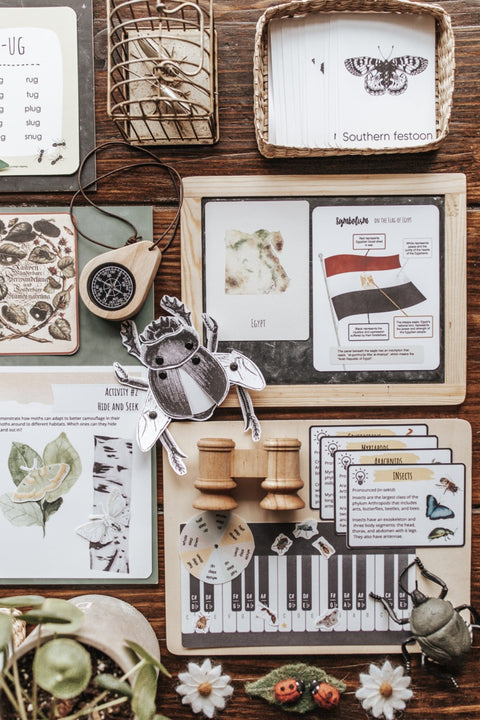
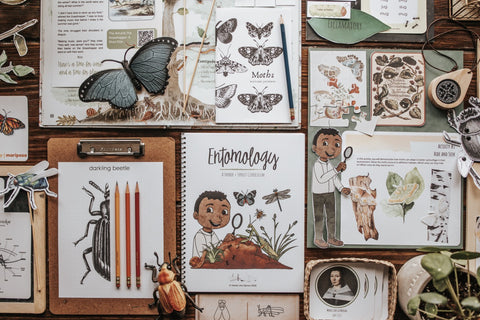
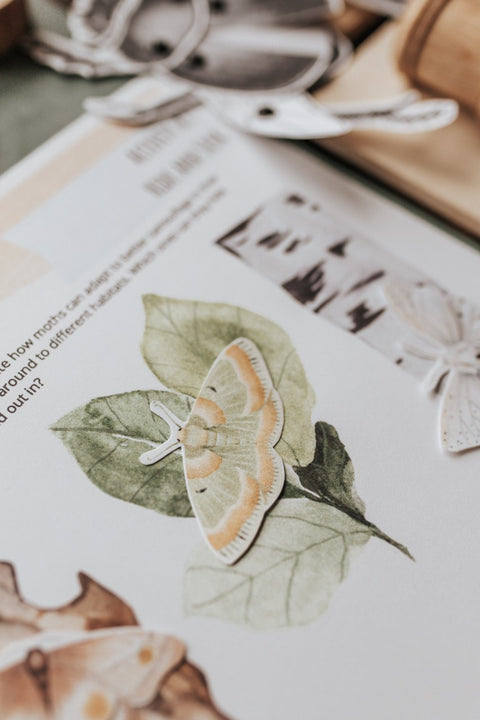
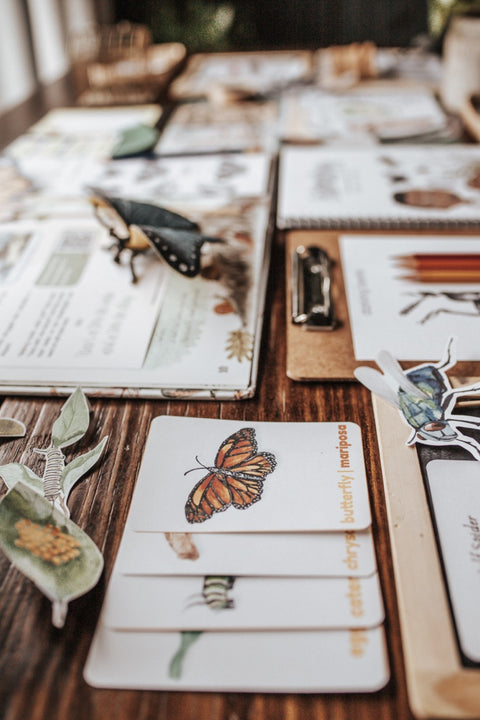
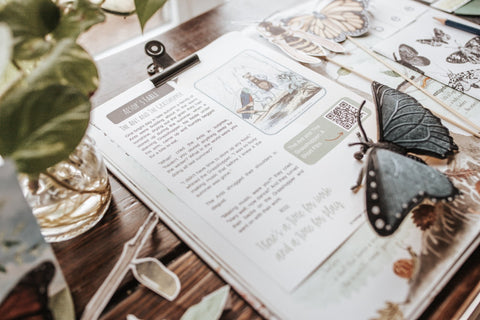
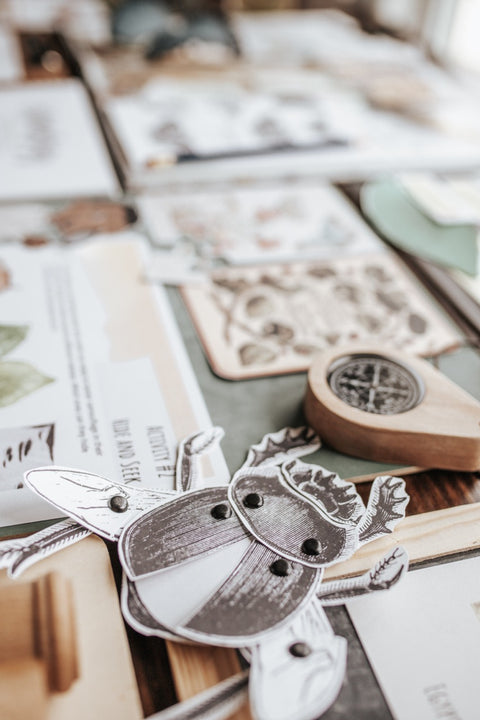
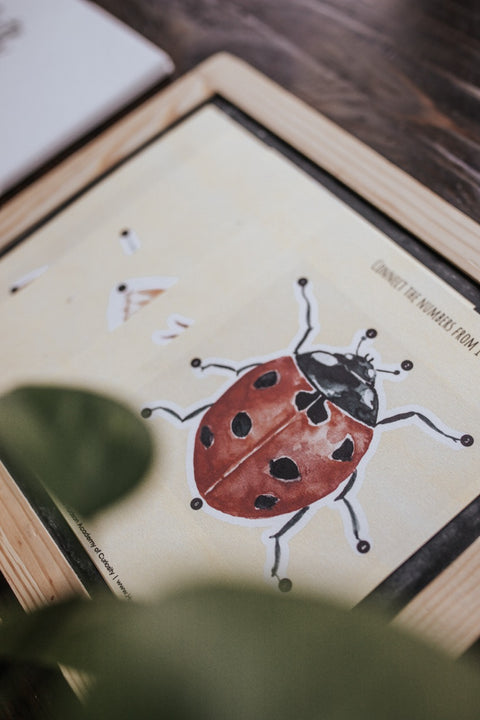
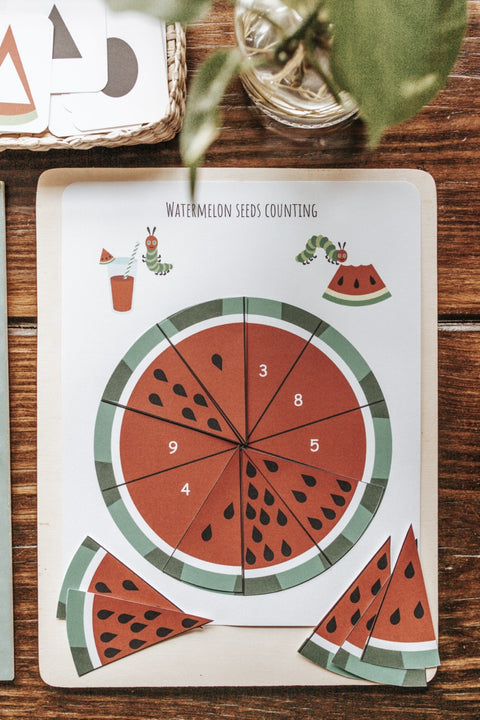
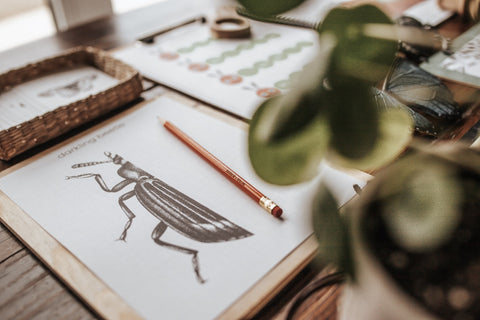
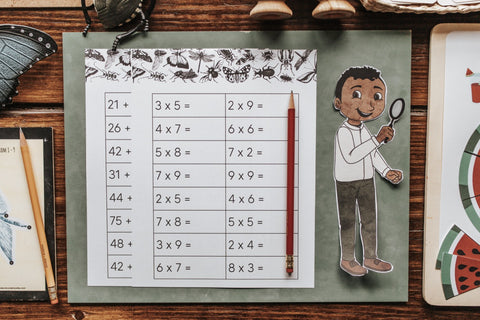
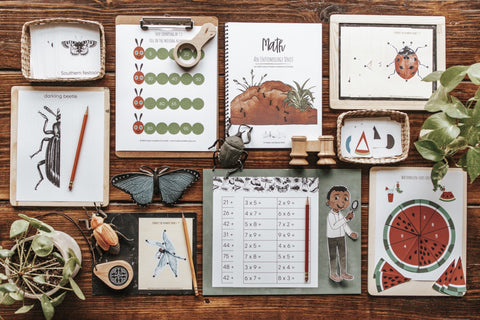
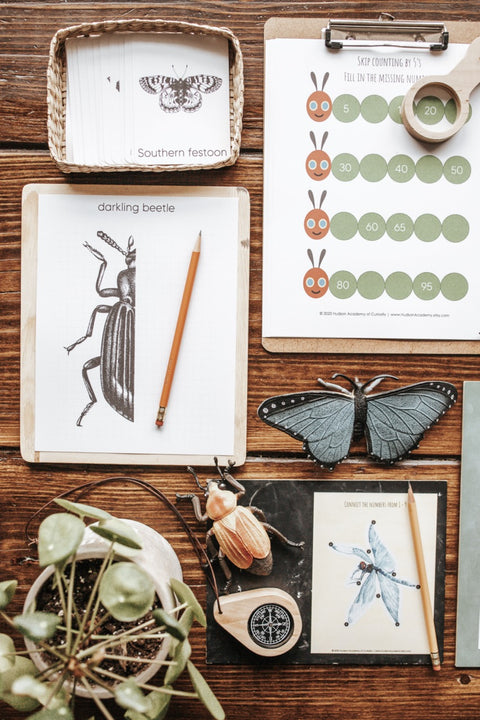


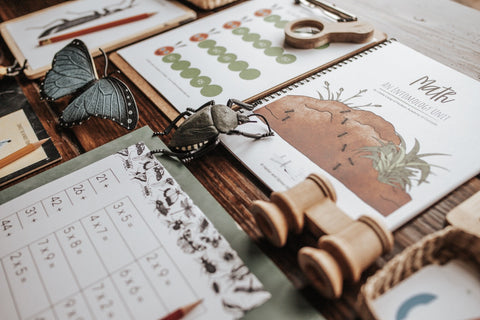
Harbor and Sprout
Entomology Patchwork Study
Welcome to the Harbor + Sprout Entomology Patchwork Study, the March 2023 release of our original elementary-level homeschool unit study curriculum. This unit study features 4 weeks of lesson plans and materials covering all 9 of our core subjects plus a playful supplemental section of thematic activities. This unit study is meant for use by children ages 3-12.
This is unit is delivered via a secure link as a digital download.
CONTENT:
Handbook
Daily, weekly, and monthly planning pages
Book list including stories, poems, and field guides with recommended ages, subject correspondence, and brief summaries for each title
Lesson plans for 4 levels of learning
Family read aloud with discussion guide and recipe
Character kit- new monthly character illustrated by Stephanie Groves to act as your guide through the unit
Science
Week 1: What is an Arthropod?- Learn about the different groups that make up the arthropod family. Find out what characteristics entomologists use to classify arthropods. Complete the color and trace activity. Study and label the anatomy of the red harvester ant and the huntsman spider. Complete the Venn diagram comparing insects and spiders.
Week 2: What is Metamorphosis?- Learn about the process of metamorphosis and the four distinct stages. Complete the color and trace activity. Study the 13 year metamorphosis of a cicada and complete the related activity. Create a butterfly metamorphosis model.
Week 3: What is Camouflage?- Discover different ways that insects have adapted in order to protect themselves from predators. Create fun insect camouflage with nature elements. Complete the hide and seek activity. Perform an experiment to better understand butterfly chromatography.
Week 4: Why are Insects Important?- Learn ways that insects help the Earth-- and us. Study how pollination works with the pollination activity. Create a backyard bug hotel. Trap insects to study and release by creating a pitfall trap. Complete the pitfall trap survey.
Nature Study
Week 1: Moths- Explore the nocturnal adaptations of the moth including vision, evasion tactics, and navigation. Discover the role of moths in ecosystems. Set up a moth observation and record your findings in your new Moth Nature Journal. Conduct a soundproofing experiment to see how moth wings provide stealth cloaking from bat sonar. Extend your learning with a moth anatomy study.
Week 2: Crickets- Explore the nocturnal adaptations of the cricket including their communication systems and powerful leaps. Learn about Dolbear's Law and conduct a cricket thermometer lab. Celebrate what we've learned with a jumping cricket craft. Extend your learning with a cricket anatomy study.
Week 3: Fireflies- Explore a firefly's bioluminescent nocturnal adaptation. Learn how to help fireflies have a bright future. Follow our guided firefly study and nature journaling prompts. Talk like a firefly with our morse code light signals! Extend your learning with a firefly anatomy study.
Week 4: Wolf Spiders- Explore the nocturnal adaptations of the wolf spider including vision and speed. Learn how spiders power their legs through hydraulics. Conduct a demonstration to see how wolf spiders glow in the dark. Celebrate what we've learned with a traveling wolf spider craft. Extend your learning with a wolf spider anatomy study.
Language Arts
Week 1: Entomology Words- Learn about the -ug word family. Study entomology vocabulary. Choose a word to focus on and describe. Choose entomology words to learn to spell. Trace the letter cards. Complete the spelling puzzles. Use the ladybug letters to help you practice spelling vocabulary words. Try to your hand at the "Words-in-words" puzzles. Research the origin of your favorite entomology word.
Week 2: The Mosquito Tries to Teach his Neighbors short story study- Read or listen to the story "The Mosquito Tries to Teach his Neighbors." Enjoy a meadow picnic as you listen to the story. Create your own meadow artwork. Summarize the story using art, words, or both. Complete the M is for mosquito coloring page. Answer the story study questions. Complete the writing worksheet.
Week 3: Sentence Types- Discover the four different types of sentences. Study sentence enders. Complete the "Feed the Caterpillars" activity to practice sorting sentences. Identify different types of sentences. Challenge yourself by writing a bug-themed paragraph using all four sentence types.
Week 4: Alliteration- Discover what alliteration is. Complete the bug beginning sounds activity. Practice with the beginning sounds clip cards. Use adjectives to practice alliteration. Try to see if you can say the tongue twisters. Write your own tongue twister.
Writing
Week 1: Summarizing- Discover what a summary is and learn how to summarize a book. Read the "Little Red Hen." Then learn how to answer the 5 W questions about the story. Listen to the book "The Very Hungry Caterpillar." On your own, answer the 5 W questions about that book. Write a summary about "The Very Hungry Caterpillar." Then, choose your own book, answer the 5 W questions, and write a summary about it!
Week 2: Opinion Writing- Study opinion writing. Explore position statements. Practice writing position statements about a book or story you love. Learn how to write supporting sentences to explain your position statement. Complete the "Support Your Opinion" practice page. Write a paragraph sharing your opinion.
Week 3: Personal Connections- Learn what a personal connection is, and study some examples of personal connection questions. Play the "Making Personal Connections" game. Complete the "Making Personal Connections Prompts" activity. Learn how to write a personal connection paragraph. Complete the "Make a Personal Connection" worksheet. Then, write a personal connection paragraph.
Week 4: Book Report- Choose a book that you love. Use the preparation pages to write about the author and illustrator of your book, summarize your book, write your opinion of your book, and make a personal connection with your book. When you're ready, choose one of the fun options provided to publish your book report.
History
Week 1: History of Entomology- Consider what you already know about entomologists and fill out the "Who is an Entomologist" worksheet. Read about the history of entomology. Discover the mother of entomology. Fill out historical figure report. Complete the art study. Print and cut out the puzzle. Then solve the puzzle.
Week 2: Father of Modern Taxonomy- Study the life of Carl Linnaeus. Discover the system of binomial nomenclature. Explore the order of Linneaus's classification system. Study the taxonomy of the honeybee. Choose an insect and fill in the taxonomy of that insect. Print and cut out the puzzle. Then solve the puzzle.
Week 3: Discovery of the Color Red- Learn about the cochineal. Discover how a white insect can produce the color red. Learn how the red pigment is used throughout the world. Go on a scavenger hunt to find different shades of red. Print and cut out the puzzle. Then solve the puzzle. Complete the historical figure report.
Week 4: Entomology in Literature- Study Aesop. Learn the history of his famous fables. Read the fable "The Ant and the Grasshopper." Complete the puzzle. Color the coloring page. Complete the historical figure report.
Geography
Week 1: Egypt- Discover some interesting facts about Australia including its national anthem, flower, animal, and capital city. Color the flag of Egypt. Study the symbols found on the flag. Test your knowledge of Egyptian facts with the included trivia cards.
Week 2: Maps- Trace the continent of Africa and the continent of Asia. Then trace the country of Egypt. Locate Africa and Egypt on the map. Can you also find any other countries, continents, or oceans that you recognize? Cut out the labels and use them to label the map of Egypt. Use the second map to label the locations in Egypt that you remember.
Week 3: Ancient Egypt- Discover the history and culture of ancient Egypt. Learn about the clothing, cuisine, and language. Explore the significance of the Nile River. Color the coloring page. Learn about how papyrus was made, then complete the papyrus craft. Draw your own insect hieroglyphs.
Week 4: The Sacred Scarab- Learn what the sacred scarab signified to the ancient Egyptians. Build your own scarab beetle. Color the coloring page.
Music
Week 1: Insects that Sing- Explore different sounds made by different insects. Fill in the "Insect Listening Sheet." Learn about different ways that insects are able to produce sounds. Create your own insect, and imagine how its sound would be made.
Week 2: Inspired by Bugs- Learn about Bela Bartok and his work "From the Diary of a Fly." Listen to the song. Use the fly cutout to show how you think the fly is moving during the song. Now, study the song "The Wasps" by Ralph Vaughan Williams. Use the wasp cut out to mimic the song. Fill in the Venn diagram to compare the two songs.
Week 3: Ascending and Descending Scales- Find out about whole steps and half steps on a staff. Learn what a musical scale is and learn the difference between an ascending scale and a descending scale. Play the "Half Step/Whole Step Race" game.
Week 4: The Sistrum- Learn about the instrument called the sistrum. Find out how it makes sound. Make your own sistrum. Color the ancient Egyptian instruments.
Art
Week 1: Value- Explore the artwork of Balthasar van der Ast. Learn about the element of value. Complete the "V" is for value. Create a tissue paper ladybug. Use oil pastels or crayons to create a hiding grasshopper. Draw beautiful flowers and add a bee to your artwork. Complete the grid painting project. Using paper insects, create a pinned insect display. Complete an art study. Critique your own art.
Week 2: Space- Learn about the artist Jan van Kessel. Discover the art element of space. Fill in the "S" is for space worksheet. Create a dragonfly sun catcher. Use cardboard to create insects. Color the coloring page. Make a negative space dragonfly. Learn about giant, ancient dragonflies. Create a moth window cling. Complete an art study. Critique your own art!
Week 3: Color- Study the artist Maria Sibylla Merian. Learn about the element of color. Complete the "C" is for color. Create beetle stamps. Color the coloring page. Use paint to create a glowing firefly project. Explore the element of color further by creating a golden scarab masterpiece. Create a cicada oil pastel. Learn how to draw a cicada. Complete an art study. Critique your own art.
Week 4: Movement- Discover the artwork of Jennifer Angus. Study the element of movement. Fill in the "M" is for movement. Create a 3D dragonfly. Use ink blobs to create colorful beetles. With your fingerprints, create "ants on pants." Continue using your fingerprints to make more, colorful insects. Create an Eric Carle-inspired butterfly. Learn about the Picasso bug and create your own. Complete an art study. Critique your own art!
Math
Week 1: Calculation Practice- Solve math problems using multiplication, division, subtraction, and addition. Choose the math problems that are appropriate for your learning level. Many levels are provided.
Week 2: Insect Symmetry Drawing- On the grids provided, finish drawing the other half of each insect. Use the grid to help you draw each insect to scale.
Week 3: Caterpillar Number Sequence and Games- Complete the number sequences that are right for your learning level. Levels start at number tracing and advance to counting by 9's and 10's. Play the shape matching game. Count the caterpillars. Complete the patterns. Practice counting with watermelon seeds.
Week 4: Math Coloring- Practice counting with the caterpillar roll and color game. Complete the bug numer connection pages.
Supplement
Beetle activity sheets
Beetle cards
Bug number puzzles
Butterfly activity sheets
Butterfly halves
Butterfly puppet
Entomology words
Lifecycle of a beetle
Moth anatomy
Moth clip cards
Bilingual butterfly life cycle
Bilingual insect counting
Insects I spy
Insect word search
This unit is delivered as a downloadable zip file. H+S Patchwork Studies average approximately 550-650 pages of content. While the download does include the option to print the full unit straight through front and back, we recommend printing on an as-needed, as-you-go basis. Enjoy your Entomology adventure!
